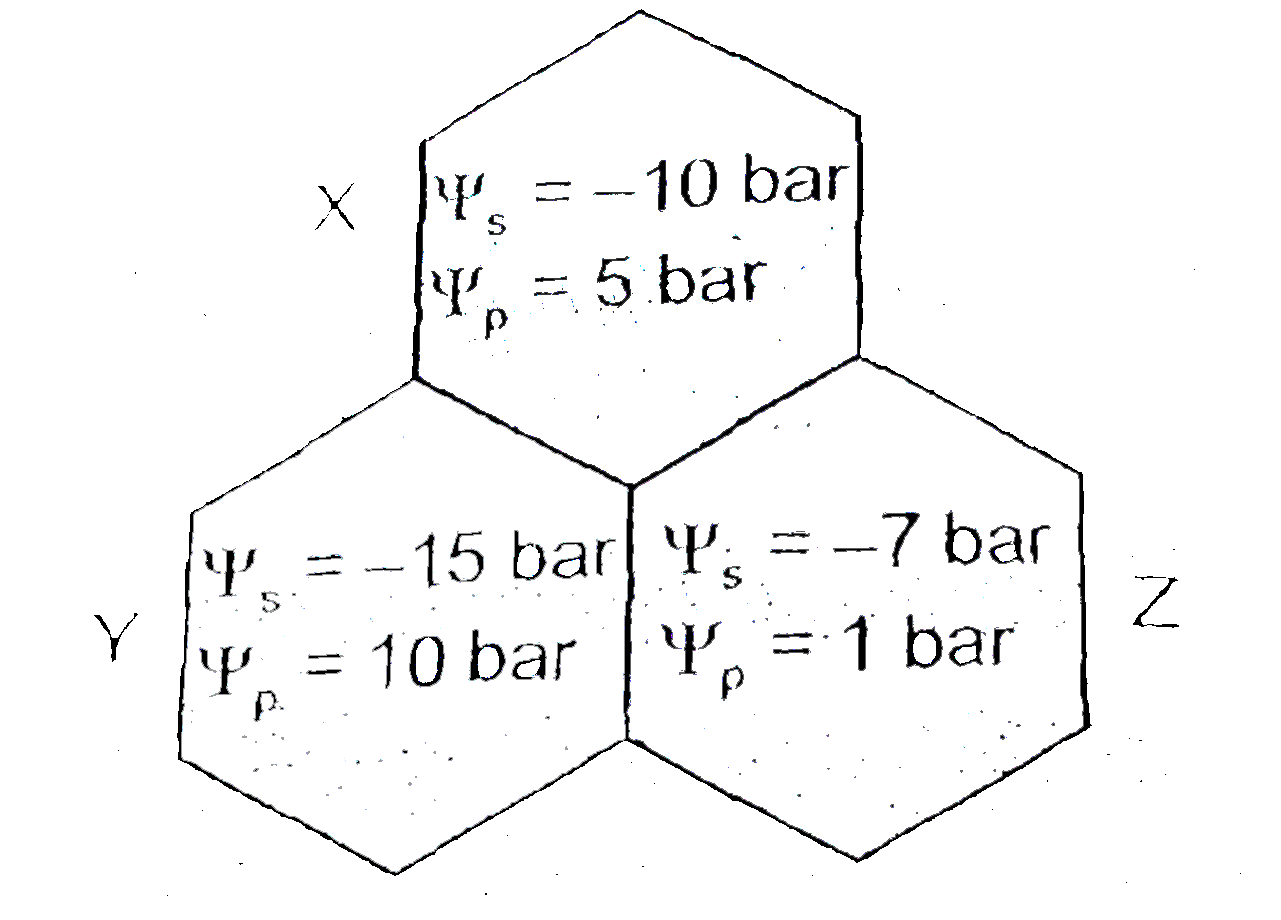Correct pathway of water movement in plant roots is
Soil water Root hair cell Passage cells Cortical cells Xylem to Pericycle
Soil water Root hair cell Pericycle Cortical cell Passage cells Xylem
Soil water Root hair cell Cortical cell Passage cells pericycle Xylem
Soil water Root hair cell Cortical cell Pericycle Passage cells Xylem
The correct Answer is:C
To determine the correct pathway of water movement in plant roots, we can analyze the options provided step by step:
1. Understanding Water Movement: Water enters the plant through the roots, specifically through root hair cells. The movement of water follows a specific pathway from the soil to the xylem.
2. Analyzing the Options:
- Option 1: Soil → Water → Root Hair Cells → Passage Cells
- This option is incorrect because after root hair cells, the water does not go directly to passage cells.
- Option 2: Soil → Water → Root Hair Cells → Pericycle
- This option is also incorrect because the water does not go directly to the pericycle after root hair cells.
- Option 3: Soil → Water → Root Hair Cells → Cortical Cells → Passage Cells → Pericycle → Xylem
- This option is correct. Water moves from the soil to the root hair cells, then to the cortical cells, followed by passage cells, pericycle, and finally into the xylem.
- Option 4: Soil → Water → Root Hair Cells → Cortical Cells → Pericycle → Passage Cells
- This option is incorrect because the water moves from cortical cells to passage cells, not directly to the pericycle.
3. Conclusion: The correct pathway of water movement in plant roots is represented by Option 3: Soil → Water → Root Hair Cells → Cortical Cells → Passage Cells → Pericycle → Xylem.
- Option 1: Soil → Water → Root Hair Cells → Passage Cells
- This option is incorrect because after root hair cells, the water does not go directly to passage cells.
- Option 2: Soil → Water → Root Hair Cells → Pericycle
- This option is also incorrect because the water does not go directly to the pericycle after root hair cells.
- Option 3: Soil → Water → Root Hair Cells → Cortical Cells → Passage Cells → Pericycle → Xylem
- This option is correct. Water moves from the soil to the root hair cells, then to the cortical cells, followed by passage cells, pericycle, and finally into the xylem.
- Option 4: Soil → Water → Root Hair Cells → Cortical Cells → Pericycle → Passage Cells
- This option is incorrect because the water moves from cortical cells to passage cells, not directly to the pericycle.
Topper's Solved these Questions
- TRANSPORT IN PLANTSBOOK - DINESH PUBLICATION ENGLISHCHAPTER - TRANSPORT IN PLANTSEXERCISE - CHECK YOUR GRASP
40 Videos
- TRANSPORT IN PLANTSBOOK - DINESH PUBLICATION ENGLISHCHAPTER - TRANSPORT IN PLANTSEXERCISE - CHECK YOUR GRASP
40 Videos
- THE LIVING WORLDBOOK - DINESH PUBLICATION ENGLISHCHAPTER - THE LIVING WORLDEXERCISE - Check your grasp
12 Videos
- VERTEBRATA-AGNATHA AND PISCESBOOK - DINESH PUBLICATION ENGLISHCHAPTER - VERTEBRATA-AGNATHA AND PISCESEXERCISE - Check Your Grasp
12 Videos
Similar Questions
Knowledge Check
The pathway of the movement of water through cell wall only is called:
Asymplast pathwayBplasmodesmata pathwayCapoplast pathwayDvacuolar pathway
Differentiate apoplast and symplast pathways of water movement. Which of these would need active transport ?
View SolutionFind the correct pathway of movement of water in given presentation of cells .

View SolutionList two important pathways by which water moves in the root cortex.
View SolutionDraw a labelled diagram showing apoplastic and symplastic pathways of water transport in plants.
View SolutionThe correct pathway of initiation and passing route of conduction of impulse is
View SolutionNet movement of water is from
View SolutionThe movement of water is along
View Solution

